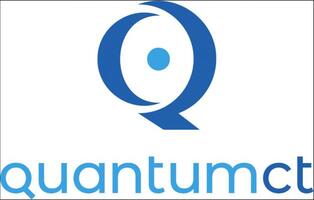
‘We are realizing a faster pace of quantum innovation—and advancing our state’s role as a leader in quantum science and technology’
What do underwater navigation, drug safety, and air traffic control have in common? Each creates challenges that quantum science and technology could solve.
In Connecticut, the unique public-private partnership QuantumCT is accelerating research to meet those challenges head on—and to position Connecticut as a global quantum technology hub.
 As of this spring, nine Connecticut-based research groups have received one-year seed grants for exploratory quantum projects. Each project aims to tackle a “challenge problem” issued by corporate partners in the state, like the need to develop algorithms that simulate molecular drug actions in the body, or to invent exquisitely accurate but hardy sensors that work in extreme environments with little power
As of this spring, nine Connecticut-based research groups have received one-year seed grants for exploratory quantum projects. Each project aims to tackle a “challenge problem” issued by corporate partners in the state, like the need to develop algorithms that simulate molecular drug actions in the body, or to invent exquisitely accurate but hardy sensors that work in extreme environments with little power
In other words, the projects are directly relevant to Connecticut industries, including aerospace, biotech, and life sciences. This practical approach to science is called use-inspired research.
“These grants are fertilizing creative, potentially transformative projects in quantum science and technology across several key industries, all of which are central to Connecticut’s present and future economy,” says Michael Crair, Vice Provost for Research and William Ziegler III Professor of Neuroscience and Professor of Ophthalmology and Visual Science at Yale University.
The seed grants are funded by the University of Connecticut and Yale University and distributed via QuantumCT. Research results will help QuantumCT plan long-term research eligible for competitive funding through the National Science Foundation’s Regional Innovation Engines (a program established through the 2022 CHIPS and Science Act).
The aim of QuantumCT is to make Connecticut a global destination for quantum education, job training and equitable job growth, research innovation, and industry excellence.
Advanced sensing
Airplanes, ships, and other vehicles rely on sensors for accurate navigation. But current sensor technologies have important limitations, and five of the project teams are working to develop better ones.
One project lead by Charles Ahn, John C. Malone Professor of Applied Physics and Professor of Mechanical Engineering and of Physics at Yale University, and Alexander Balatsky, professor of physics at the University of Connecticut, aims to develop a robust, highly sensitive radiofrequency (RF) sensor that outperforms state-of-the-art directional sensors. To do this, the team is studying how electromagnetic waves interact with atom-sized magnets.
“We incorporate magnetic atoms on thin films on the nanoscale,” says Dung Vu, a Yale postdoctoral associate on the team, which also includes collaborators from RTX Technology Research Center (RTRC), the research arm of RTX and its three businesses Collins Aerospace, Pratt & Whitney, and Raytheon.
“By changing properties such as energy and polarization of the light we shine on to the film, we can manipulate the quantum magnet’s properties, then measure the change of the magnetic field around them when they interact with light,” Vu says.
The devices, Vu explains, can be used to make RF sensors that may be useful for airborne and autonomous vehicles.
In addition, Peter Rakich, Associate Professor of Applied Physics and Physics at Yale University, is developing a technique to attach microscopic mirrors to the end of silica fibers, creating a tiny, high-finesse device called a resonator. This resonator should allow precise control of quantum particles, like the ability to couple light particles with ions. That could advance not only sensors, but also quantum computers and networking.
Computing revolutions
With quantum technologies poised to revolutionize computing, many industries stand to benefit.
A joint Yale-UConn team led by Yale physics professor Steven Girvin, Sterling Professor of Physics, is exploring whether new algorithms could help quantum computers handle hard constraints on optimization problems. The research should also have relevance to problems like portfolio optimization and risk assessment that frequently arise in domains like finance and insurance, supply-chain logistics, and flight route planning, according to Amit Surana, an RTRC researcher working with the team.
“The value proposition is that even slight improvements to logistics, even by half a percent, can mean huge savings,” Surana says.
This story is adapted from the UConn Today story of June 28, 2024. Please see below for a link to the original article.